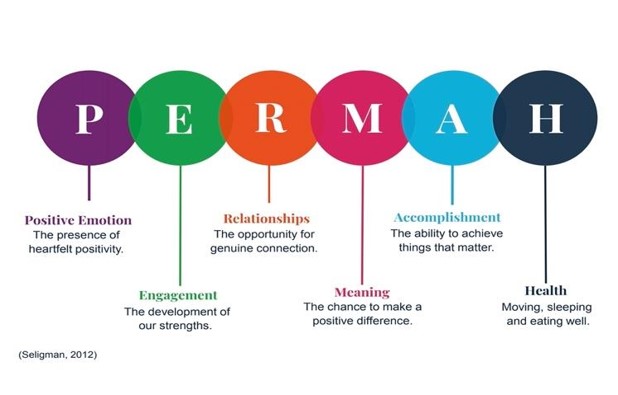Positive Psychology is defined as the “science of the conditions and processes that lead to optimal human functioning", “the scientific study of human flourishing, and an applied approach to optimal functioning" (Gable & Haidt, 2005). Us at our best! Positive Education brings together the science of Positive Psychology with best practice teaching to encourage and support individuals, schools and communities to flourish. It focuses on specific skills that assist students to strengthen their relationships, build positive emotions, enhance personal resilience, promote mindfulness and encourage a healthy lifestyle.
The Positive Education Program (PEP) is taught to students in Year 7–10 by their House Dean using content predominantly from PEEC (Positive Education Enhanced Curriculum), developed by the Institute of Positive Education. At the heart of PEEC is Martin Seligman's PERMAH model, six core domains of wellbeing developed by the founder of Positive Psychology: Positive Emotion, Engagement, Relationships, Meaning, Health and Accomplishment. By embedding the six domains into PEP, we provide students with structured, evidence-based lessons that support their emotional, social, and academic development, helping them to flourish both personally and in their learning.
Additionally, the Journey Program is offered to Year 9 students, which provides them with opportunities to embark on a process of reflection and self-discovery. This includes committing to maturing and developing as independent, responsible learners as they complete their MYP and transition into the Diploma Programme. Key components of the Journey Program include camp preparation and the Calling Ceremony - an opportunity for students to reflect on their personal growth, commit to letting go of immature behaviours, and receive their Journey Badge as a meaningful symbol of their development and readiness for the next stage of learning.
